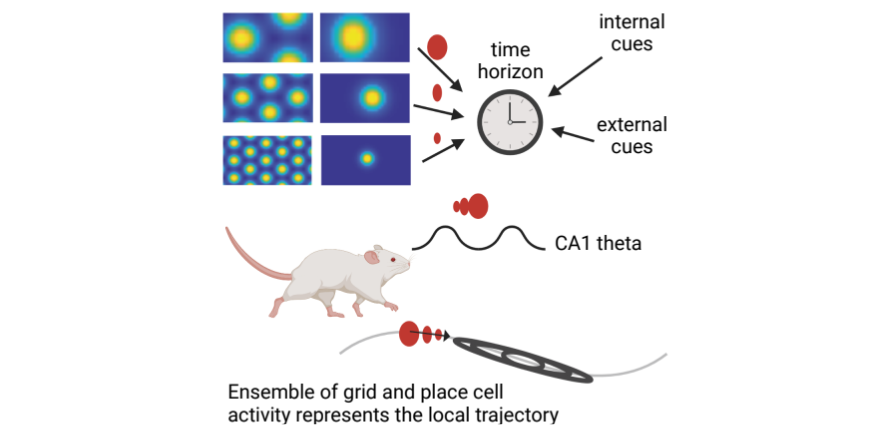
Submitted by Emily Rigby on Wed, 12/07/2023 - 12:10
A new study from the Krupic lab, led by Dr Julija Krupic, shows that the network of entorhinal grid cells and hippocampal place cells show predictive coding and encode the future trajectories of an animal rather than its current location.
Published in Cell Reports, the paper Simultaneous representation of multiple time horizons by entorhinal grid cells and CA1 place cells provides compelling evidence that instead of representing a current animal's location, the population activity of grid and place cells represents local trajectories essential for goal-directed navigation and planning. Grid cells and place cells constitute the basic building blocks of the medial entorhinal-hippocampal cognitive map. The paper's authors show that grid cells and place cells represent a spatiotemporal continuum of an animal's past, present and future locations with a bias towards future locations (Chaudhuri-Vayalambrone et al., Cell Reports, 2023, in press). This time bias is proportional to grid-scale and place field size, providing a nearly instantaneous readout of a spectrum of progressively increasing time horizons, each associated with different theta phases, which may facilitate their readout by downstream circuits.

